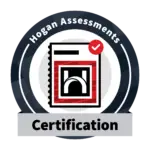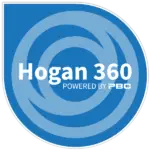Hogan Leadership Assessments
There are many different psychometric tests, measuring everything from psychological fitness to cognitive ability, skills and performance. These tests are sometimes used by organisations for pre-recruitment screening, raising self-awareness, or as part of a leadership development initiative. Diagnostic and psychometric tools can also be used to support coaching.
Hogan Assessments
Why it’s useful: Reputation matters and knowing how to manage your reputation is really important. Hogan Assessments assist you to understand the disparity between how you think of yourself and how others see you:
Personality can be defined from two perspectives:
Identity – this is how we think of ourselves and how we want others to think of us – whether we see ourselves as smart, funny, creative, etc.
Reputation – how other people describe us, because how we see ourselves is rarely the same as how others see us.
Hogan Assessments assist you to understand the disparity between how you think of yourself and how others see you.
All Hogan Personality reports draw from the same three diagnostics:
The Hogan Personality Inventory (HPI) measures how you behave in day-to-day life when you are at your best – it’s the Bright Side of your normal personality.
The Hogan Development Survey (HDS) measures how you behave when you’re under stress and pressure – it identifies the personality-based derailers that can limit your potential.
The Motives, Values, Preferences Inventory (MVPI) measures your core values, goals and interests – these are the things that determine satisfaction and drive your career, helping to identify ideal roles and work environments.
Hogan’s personality tests are based on decades of research on personality psychology and measurement, and they have been validated against external criteria, including job performance and peer ratings.
Hogan360°
Why it’s useful: Hogan 360° is a comprehensive multi-rater feedback tool designed to help career-minded individuals and leaders at any level of an organisation gain a better understanding of how they are perceived by managers, peers, direct reports, and others.
360-degree feedback is often used to inform executive coaching assignments because it offers feedback on performance and behaviour from all levels of the organisation.
The report uses an easy-to-interpret framework to provide a real-time look at an individual’s attitude, behaviour, and performance. Commonly used for development purposes, the report offers constructive feedback and sets priorities for improvement.
The Hogan Assessment Process
1
Preparation & Assessment
For Hogan Assessments, the individual will receive a request from Hogan to complete the 3 self-assessments. For Hogan360, the individual is required to take a Self-Assessment and invite other raters (leader, direct reports, peers and stakeholders) to complete an evaluation.
2
Report & Debrief
Hogan reports are produced and a 90-minute debrief meeting is scheduled. The individual will receive their report in the debrief meeting, with an email copy following immediately after the debrief (this is aligned with Hogan best practice).
3
Insights & Actions
Allowing time for reflection (1-2 weeks), a 60-minute Insights and Actions meeting is scheduled between me, the individual and their Line Manager. The purpose is to discuss key insights from the report, identify themes, and commit to action from the feedback.
My Approach to Debriefs
Certification: Interpretation of all Hogan Assessments requires Hogan Certification: I am Hogan Certified. I will adhere to Hogan’s best practice guidelines, as per my training for accreditation.
Compassion: Debriefing 360s and other diagnostics can be an emotional experience, regardless of what’s included in the report. I will create a safe space in which I can help the participant to make sense of the data.
Context: Where possible, I will adopt a systems approach by developing awareness of the context in which the organisation has chosen to use Hogan.
Confidentiality: Unless it has been explicitly agreed as part of the engagement that information will be shared with the sponsor, I will maintain confidentiality about what is discussed during the debrief. For example, if high level themes are to be shared, I will make the participant aware of this at the commencement of the debrief.
Comprehension: At the beginning of the debrief, I will ensure the participant understands how the diagnostic works, what it is measuring and how to read the reports.
Conversation: I believe the most valuable part of any diagnostic is the conversation it allows. I will utilise a coaching approach during the debrief to ensure the participant derives the greatest value from the report.


